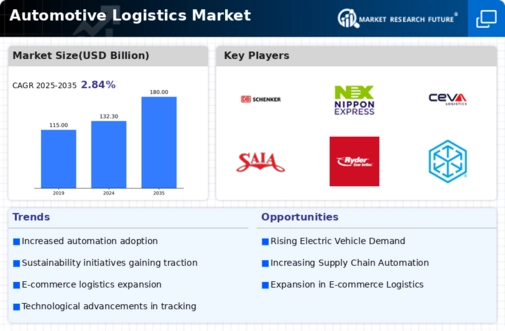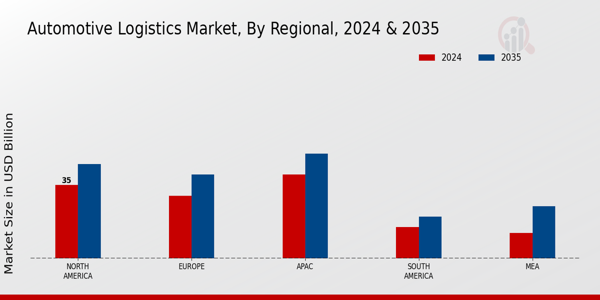The Global Automotive Logistics Market is characterized by intense competition as various players strive to optimize supply chain management and enhance efficiency within the automotive sector. The market dynamics are influenced by changing consumer demands, technological advancements, regulations, and global trade policies.
Companies in this market are focusing on providing integrated logistics solutions, improving their operational capabilities, and leveraging innovative technologies such as automation, data analytics, and cloud computing to gain a competitive edge.
This competitive landscape is continuously evolving, with firms not only competing on service quality and efficiency but also on their ability to diversify their service offerings and adapt to emerging industry trends.
DB Schenker has established a strong foothold within the Global Automotive Logistics Market by leveraging its extensive network and comprehensive range of logistics solutions. The company excels in offering end-to-end supply chain services, including transportation management, warehousing, and distribution tailored specifically for the automotive industry.
DB Schenker's strengths lie in its robust infrastructure, extensive global reach, and commitment to sustainability, allowing it to efficiently respond to the evolving needs of automotive manufacturers and suppliers.
The company continuously invests in technological innovations that enhance visibility and tracking throughout the supply chain, which are pivotal in ensuring timely deliveries and optimizing inventory management.
This capability to provide customized solutions that focus on customer needs solidifies DB Schenker's position as a key player in the competitive automotive logistics space.
Nippon Express has made significant strides in the Global Automotive Logistics Market, offering a wide array of services that include logistics planning, transportation, warehousing, and distribution specifically designed for the automotive sector.
The company’s market presence is bolstered by its strategic investments and partnerships that enhance its operational capabilities across key automotive manufacturing hubs. Nippon Express’s strengths are evident in its ability to streamline transportation processes, implement advanced logistics technologies, and adapt quickly to changing market demands.
Additionally, recent mergers and acquisitions have enabled Nippon Express to broaden its service offerings and consolidate its market position, allowing it to compete effectively against other prominent players.
With a focus on customer satisfaction and innovative solutions, Nippon Express aims to strengthen its leadership in the global automotive logistics landscape, meeting the changing complexities and requirements of automotive supply chains worldwide.























